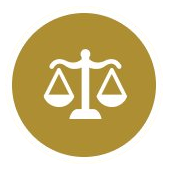Strategic goals

The transition to a sustainable society and economy requires huge investments and is therefore a major challenge for all of us. At Deutsche Bank, we see the transition effort not only as a challenge, but also as a growth opportunity. We made sustainability—which encompasses environmental, social, and governance dimensions—a core element of Deutsche Bank’s Global Hausbank strategy in 2019. Since then we have embedded sustainability into products, services, policies, and processes in all key areas of the bank. It has become one of the three key topics that underpin our corporate strategy, along with macroeconomic shifts and technology.
 |
Sustainable Finance |
Navigate the bank’s clients on their sustainability journey by being deeply embedded in their decision-making and process, supported by an innovative and data-driven offering |
 |
Policies & Commitments |
Maintain and develop dedicated control frameworks and processes to turn regulatory challenges into business opportunities and steer decision-making based on impact measurement |
 |
People & Own Operations |
Build a sustainability-led organization driven by value-based leadership, with empowered employees—embedding environmental and social aspects deeply in the bank’s processes |
 |
Thought Leadership & Stakeholder Engagement |
Play a pivotal role for government agencies, academia, and interest groups to accelerate standard setting locally and internationally |
To underline Deutsche Bank’s strong commitment to sustainability, the bank has set itself the following key targets and goals:
- The bank aims to achieve cumulative sustainable financing and ESG investment volumes of € 500 billion in the period from January 2020 to end of 20251 (excluding DWS)
- Deutsche Bank is committed to reduce its CO2 emissions (Scope 1 to 3) to net-zero by 2050. Therefore, the bank has set net-zero targets for the eight most carbon-intensive sectors in its corporate loan book by end of 2030 (interim) and end of 2050 (final) and linked the Management Board compensation to adherence to these pathways
- The bank aims to encourage as many of its high-emitting clients in the most carbon-intensive sectors to commit to net-zero. However, due to alternating dynamics internationally with regards to net-zero commitments, the bank no longer believes it is realistic to achieve the ambition of 90% from 2026 onwards. Nevertheless, Deutsche Bank will report annually on the progress regarding this ambition
- It aims to have women representing at least 35% of Managing Director, Director and Vice President roles by year-end 2025
- Deutsche Bank aims to implement and publish its Transition Finance Framework in 2025
- Reduce emissions in the bank’s own operations and supply chain (Scope 1, Scope 2 and Scope 3: Category 1 to 14) by 46% until end of 2030 compared to the 2019 baseline
1 Sustainable financing and ESG investment activities as defined in Deutsche Bank’s Sustainable Finance Framework and “Deutsche Bank ESG Investments Framework” which are available on our website.
Our sustainability journey
By rigorously implementing our sustainability strategy, which is based on four pillars, we have made substantial progress in integrating sustainability into our business and operating model. As a testament to the significant change we have initiated, we provided a comprehensive update on our progress and strategic outlook at our 2nd Sustainability Deep Dive in March 2023. Since Sustainability has become a central part of the bank’s strategy in July 2019, Deutsche Bank has made significant progress on its sustainability transition, and net zero in particular.


Read more in our report
Show content of Disclaimer
The transition to a sustainable economy is a long-term undertaking. In its current stage, we are confronted with the limited availability of climate related data. Use of estimates and models is inevitable until improved data becomes available. Our expectations for increasing data quality are based on reporting obligations as currently developed. New regulations on reporting will likely become effective in the coming years. Harmonized standards and calculation methods are expected to be developed and will also improve data quality.
The sustainability targets on this website includes metrics that are subject to measurement uncertainties resulting from limitations inherent in the underlying data and methods used for determining such metrics. The selection of different, but acceptable measurement techniques can result in materially different measurements. The precision of different measurement techniques may also vary. The information set forth herein is expressed as of end of October 2023, and we reserve the right to update its measurement techniques and methodologies in the future.
We have measured the carbon footprint of our corporate loan portfolio in accordance with the standards we discuss in our report on corporate loan portfolio financed emissions and net-zero-aligned pathways for focus sectors (Towards net-zero emissions). Furthermore, we have measured the carbon footprint of our European Real Estate loan portfolio in accordance with the standards we discuss in our report on Residential Real Estate – Leading to Net-zero. In doing so, we partly used information from third-party sources that we believe to be reliable, but which has not been independently verified by us, and we do not represent that the information is accurate or complete. The inclusion of information contained in on this website should not be construed as a characterization regarding the materiality or financial impact of that information.
If emissions have not been publicly disclosed, these emissions may be estimated according to the Partnership for Carbon Accounting Financials (PCAF) standards. For borrowers whose emissions have not been publicly disclosed, we estimate their emissions according to the PCAF emission factor database. Since there is no unified source of carbon emission factors (including sustainability-related database companies, consulting companies, international organizations, and local government agencies), the results of estimations may be inconsistent and uncertain.
Past performance and simulations of past performance are not a reliable indicator and therefore do not predict future results.
This website contains forward-looking statements. Forward-looking statements are statements that are not historical facts; they include statements about our beliefs and expectations and the assumptions underlying them. These statements are based on plans, estimates, and projections as they are currently available to the management of Deutsche Bank Aktiengesellschaft. Forward-looking statements therefore speak only as of the date they are made, and we undertake no obligation to publicly update any of them in consideration of new information or future events. By their very nature, forward-looking statements involve risks and uncertainties. Several important factors could therefore cause actual results to differ materially from those contained in any forward-looking statement. Such factors include the conditions on the financial markets in Germany, in Europe, in the United States, and elsewhere, from which we derive a substantial portion of our revenues and in which we hold a substantial portion of our assets; the development of asset prices and market volatility; potential defaults of borrowers or trading counterparties; the implementation of our strategic initiatives; the reliability of our risk management policies, procedures and methods; and other risks referenced in our filings with the U.S. Securities and Exchange Commission. Such factors are described in detail in our most recent SEC Form 20-F under the heading “Risk Factors.” Copies of this document are readily available upon request or can be downloaded from our website.
